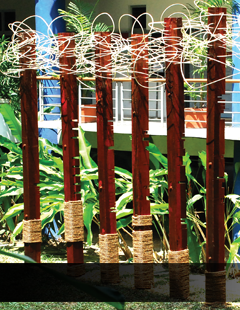
The Heart of Culture, The Soul of Heritage |
| Nor Atiah Ismail, Mohd Nazri Saidon & Mustafa Kamal Mohd Shariff |
Like the rest of sentient beings on this planet, man has learned to understand and acknowledge his position about nature. He has survived and his survival is dependent upon his capacity to adapt and adopt and the ability to acclimatize himself in the environment. Thus, our living environment is continually altered by human activities developing their cultural landscape. They are the reflection of human adaptation and use of natural resources. They are part of our national heritage, and part of each of our lives. They reveal our relationship with the land over time. Cultural landscapes are special places that reveal aspects of our country’s origin and development through their forms, features and history of use. More than just a gardens and parks, cultural landscapes may range from thousands of acres of rural land to a small homestead with a small front yard. These influences permeate every aspect of an individual life influencing both thoughts and behavior, thus determining how one looks at the world (Tuan, 1974). Kaplan et al. (1985) agree that the understanding of the environmental setting elicits emotional growth, which in turn symbiotically influences the behavior of others. As an example, looking into the perspectives of the Malay communities, culture is manifested in landscape through religion and belief, values and norms and custom and behavior. As the Malays practice Islam, we believe that the landscape is the manifestation of the goodness; strengthening man’s devotion to the creator.
|



